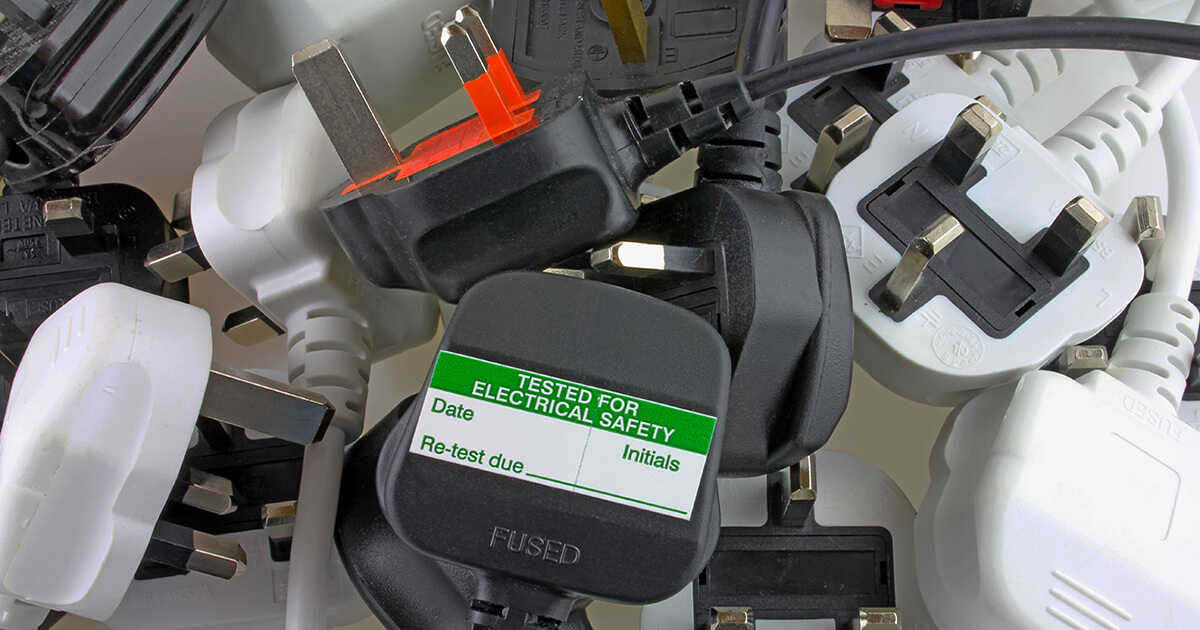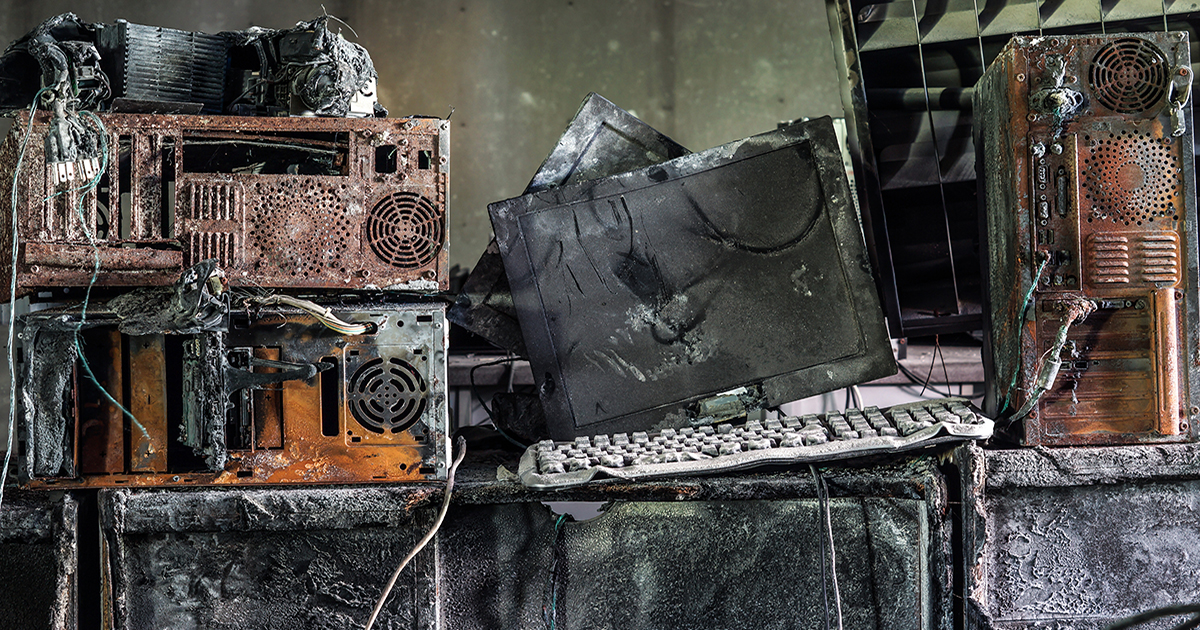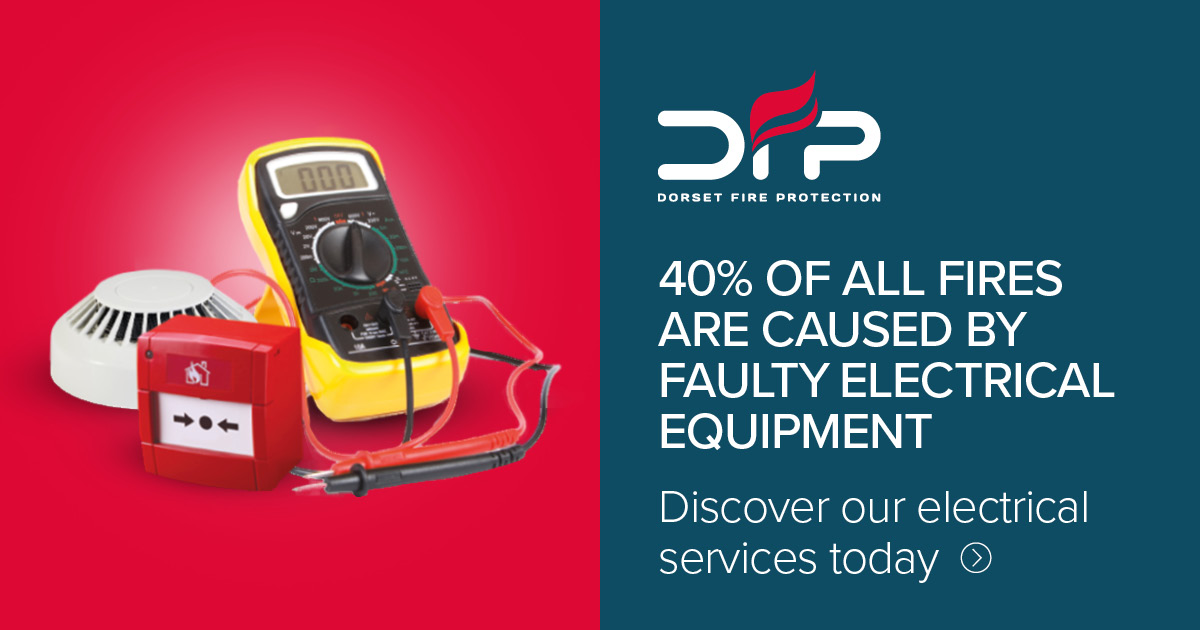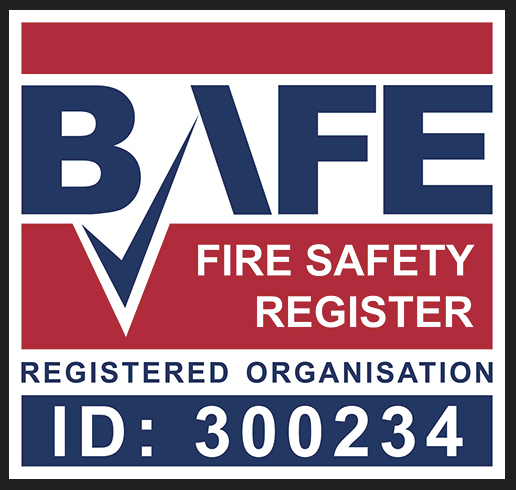Industry Articles

PAT Testing: The Complete Guide
Each year about 1000 accidents at work involving electric shock or burns as a result of electrical faults are reported to the Health and Safety Executive (HSE). Around 30 of these are fatal.
Workplaces, offices, hotels, shops and care homes should be low-risk environments and with the correct maintenance of electric equipment and appliances, they can remain this way. That’s where PAT testing comes in.
What is PAT testing?
Portable Appliance Testing (PAT) is the term associated with the examination of electrical equipment and appliances that verifies they are safe to use. Many defects that impact safety can be found by visual inspections but some issues can only be found by testing.
In the same manner, visual testing can’t be discredited as sometimes safety defects can’t be discovered by testing alone. A combination of visual assessment and PAT testing can ensure electrical equipment is safe to use.
A PAT test is perceived as a common-sense safety regulation as it works to ensure that any people, workers, or tenants who might come into contact with portable electrical appliances are not at risk of injury.
The Electricity at Work Regulations 1989 outlines in Regulation 4 that ‘All systems shall at all times be of such construction as to prevent, so far as is reasonably practicable, danger. As may be necessary to prevent danger, all systems shall be maintained so as to prevent, so far as is reasonably practicable, such danger’.
PAT testing is the maintenance of these systems to take reasonable steps against danger and unnecessary risks.
For all types of organizations, from small offices to large corporations an outside testing company is the best course of action. A competent and certified PAT Testing professional will best be able to observe the appliances and look for obvious signs of wear.

What equipment needs PAT testing?
Deciding what equipment needs to be PAT tested is not as problematic as it sounds. As far as definitions go, portable appliances include all equipment that is not part of a fixed installation.
If the appliance uses a flexible cable or plug and socket then it qualifies as a portable appliance. This equipment includes but is not limited to items such as the following:
- Electric drills
- Monitors
- Printers
- PCs
- Kettles
- Photocopiers
- Vending machines
Sometimes specific parts of an appliance need testing. For example, a cordless power tool does not require a PAT test but its battery pack does.
All computer equipment should be tested, including power cords. However, they are required to be tested separately from the equipment that they power because the standards vary. Cable extensions are the most commonly tested items as they cause the most safety hazards.
Maintaining portable electrical equipment in low-risk environments is essential to keep workspaces and residence homes safe. PAT testing is neither extortionate or extensive and should be carried out to provide peace of mind and heightened safety standards.
How much does a PAT test cost?
The cost of Portable Appliance Testing can vary but there is a common idea that companies that provide PAT testing will charge a couple of pounds per appliance.
Most businesses, offices and large residential complexes are plentiful with electrical appliances that will need to be tested. Even though some PAT engineers will require a minimum number of appliances to be tested (to cover their outgoing costs versus their ingoing), these spaces often easily exceed the minimum quotas.
It must be remembered that every computer monitor will be tested separately to its plug socket and even small items such as microwaves and kettles require PAT tests.

PAT Testing Equipment: How often?
Regulations do not specify what needs to be done, by whom or how frequently when it comes to maintaining electrical equipment. They do not make it a legal requirement to test all portable electrical appliances every year. This allows the duty holder to select precautions appropriate to the risk rather than having precautions imposed that may not be relevant to their specific work activity.
Being aware of the quality and standards of the equipment in your workplace or building will help you to understand how often a PAT test needs to occur. The more often one occurs, the more peace of mind is offered. Taking steps to maintain equipment internally will prolong the time needed between authorised PAT tests.
Only a good initial level of safety can be achieved by correct selection and use of the equipment and its connectors and cables. Lasting safety can only be attained by ongoing and effective maintenance.
Below are testing specifications for specific applications and equipment:
| Business Type | User Checks | VISUAL inspection | Inspection AND test |
| Equipment Hire | N/A | Before Issue/After return | Before Issue |
| Battery Operated Equipment (Less than 40V) | No | No | No |
| Less than 50V AC equipment, telephones, low-voltage desk lights | No | No | No |
| 110V Equipment (Construction) | Yes, weekly | Yes, monthly | Yes, Before first use on-site then 3-monthly |
| 230V Equipment (Construction) | Yes, daily | Yes, weekly | Yes, before use and then monthly |
| Fixed RCDs | Yes, daily | Yes, weekly | Yes, before first use on site, then 3-monthly (portable RCDs – monthly) |
| Equipment Site Offices | Yes, monthly | Yes, 6 monthly | Yes, before first use on-site then yearly |
| Heavy industrial/high risk of equipment damage (not construction) | Yes, daily | Yes, weekly | Yes, every 6–12 months |
| Light industrial | Yes | Yes, before initial use then 6-monthly | Yes, 6–12 months |
| Office information technology rarely moved, eg desktop computers, photocopiers, fax machines | No | Yes, 2–4 years | No if double insulated, otherwise up to 5 years |
| Double insulated (Class II) equipment moved occasionally (not hand-held), eg fans, table lamps | No | Yes, 2–4 years | No |
| Hand-held, double insulated (Class II) equipment, eg some floor cleaners, some kitchen equipment | Yes | Yes, 6 months – 1 year | No |
| Earthed (Class I) equipment, eg electric kettles, some floor cleaners | Yes | Yes, 6 months – 1 year | Yes, 1–2 years |
| Cables, leads and plugs connected to Class I equipment, extension leads and battery charging equipment | Yes | Yes, 6 months – 4 years depending on connections | Yes, 1–5 years depending on the equipment it is connected to |
Where portable electrical equipment is provided for public use, and where a duty holder does not have direct control over the way it is used, a formal visual inspection may need to be done much more frequently.
Why is PAT testing important?
Fires resulting from faulty electrical equipment account for a large proportion of incidents. Under the Regulatory Reform (Fire Safety) Order 2005 businesses and building owners have a statutory responsibility to ensure that the premises and any facilities, equipment and devices provided in respect of the premises, are subject to a suitable system of maintenance and are maintained in an efficient state, in efficient working order and in good repair.
Appropriate PAT testing can limit the risk of electric fires having an opportunity to start in offices and other buildings that could damage human life or property. Staying compliant and keep your employees/residents safe should be a top priority and a PAT test is such a simple solution for doing this.
Who can carry out a PAT test?
The law states that in order to PAT test the individual must be a competent person. There are good and bad providers of PAT tests and when it’s people’s lives at risk, you shouldn’t settle for less.
Competent PAT companies should use qualified engineers and have strong record keeping. A record and/or labelling system can be a very useful management tool to monitor and review the effectiveness of the maintenance scheme and to demonstrate that such a scheme exists.
A complete list of devices with unique asset numbers is certainly a valuable data tool as it gives the company or individual the added security of knowing that they are taking precautions to ensure the safety of their equipment.
Dorset Fire Protection’s PAT testers are qualified engineers with all the knowledge for making your PAT test as smooth and informative as possible. Your safety is our priority and we understand the importance of getting it right. Our services have been rated top marks by customers in the past due to our polite and thorough testing. We also can arrange out-of-hours testing to ensure the impact and disruption is minimised.
At Dorset Fire Protection, we provide a world-class pre-emergency service to help prevent disasters. We’re constantly evolving with new ways to help businesses stay safe.
Got equipment that needs PAT testing? Get in touch to have one of our honest and driven engineers to provide you with a first-rate service. Call us today on 0330 7000 555 or email [email protected]






